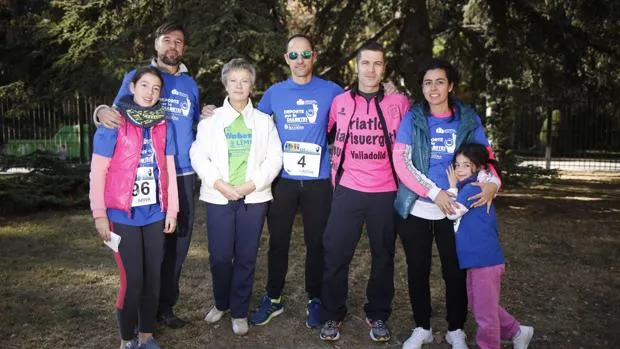Jesús Herrezuelo discovered his type 1 diabetes five years ago, "what surprised me greatly and I did scared because I was admitted and considering if I could continue with my rhythm of life."He was 30 years old and "led a healthy life."
"Knowing what the disease is and how it affects you personally is the basis to know how to take care and be able to continue with your life and your hobbies," says this young man who continues to practice triathlon and for whom it is essential to raise awareness and educate society,"And especially the youngest" in maintaining an active life and healthy eating.
In the case of Sara Herrero, his diagnosis was of type 2 diabetes, of those that do not show any symptoms.She confesses that for a while she managed to keep her at bay, losing "ten kilos" thanks to taking care of food and exercising "until an operation destabilized me and forced me to have to use insulin."
All those previous care allowed this woman to be 10 years without any medication, and now that she needs to advise "to learn a lot about nutrition to avoid developing this type of diabetes."
"Knowing what the disease is and how it affects you personally is the basis to know how to take care of yourself and be able to continue with your life and your hobbies"
For whom there was no opportunity to learn about sugar levels went to Carlota and Sandra Gallegos, who developed the disease with 2 and 3 years respectively.His parents, Oscar and Lola recognize that until that moment they knew anything about diabetes "so we didn't know how to detect the first symptoms."
Under weight despite eating well and much urination are those signs of alert that "the pediatrician did not know how to detect until he had to go to emergency," Lola explains.
In the case of minors, the main problems arise with the measurements of sugar levels that must do "between 10 and 12 times a day," explains this family, and that in children is very complicated, forcing parents toGo to schools to do it with all the alteration that this entails in the life of the family.
In their case they have the technological system called Freestyle that allows you to do their teachers just by passing it through their skin "but still without being financed" so not all families can count on it.One of the claims raised to Sacyl that is already in other autonomous communities.
Those who suffer that diabetes are a silent disease say that in many cases it seems to be stalking in the shade until it surprises you.
The figures that the main scientific and affected associations offer reflect a increasing reality that, however, finds some solutions at hand, such as healthy lifestyle habits.
Diabetes currently affect six million people in Spain, of which 200,000 reside in the community;It causes 25,000 deaths a year and is responsible for 16% of blindness cases, as well as 7 out of 10 non -traumatic amputations of the lower extremities.It is also estimated that two million people could suffer from the disease but not be aware of it.
On November 14, World Diabetes Day was held coinciding with the birthday of one of the discoverers of insulin, a medically mainly with which affected people manage to control their blood glucose indices.
The cities of the entire community have celebrated different acts of awareness, as has been the march organized by the Valladolid Association Adiva.
Under this scenario of citizen participation and with the main objective of making visible this silent disease and sensitizing in the care that the affected own must be provided, ABC has been able to speak with severalPeople who live with diabetes every day and confirm how correct life habits can make very large differences in the development of this autoimmune pathology.


